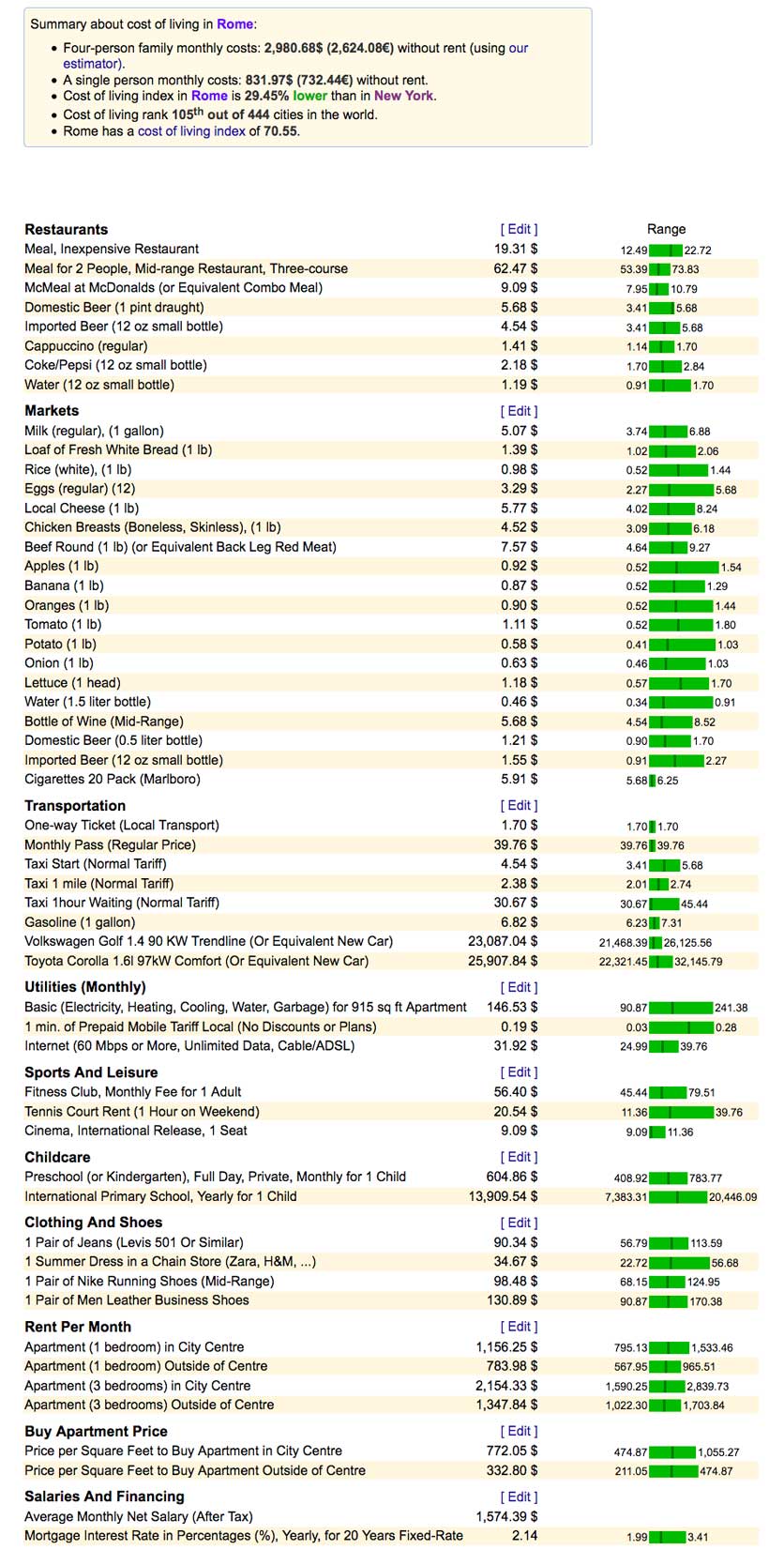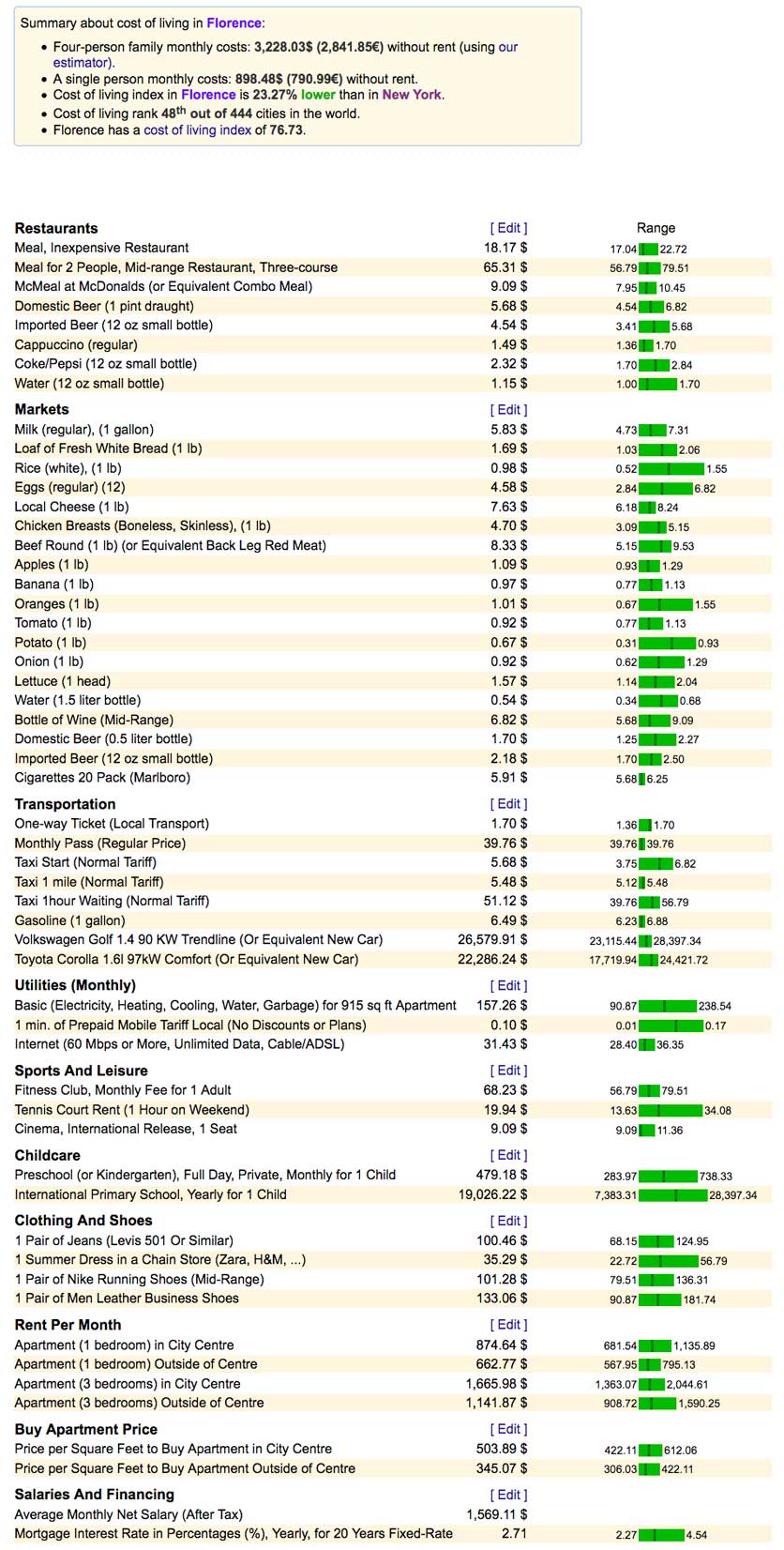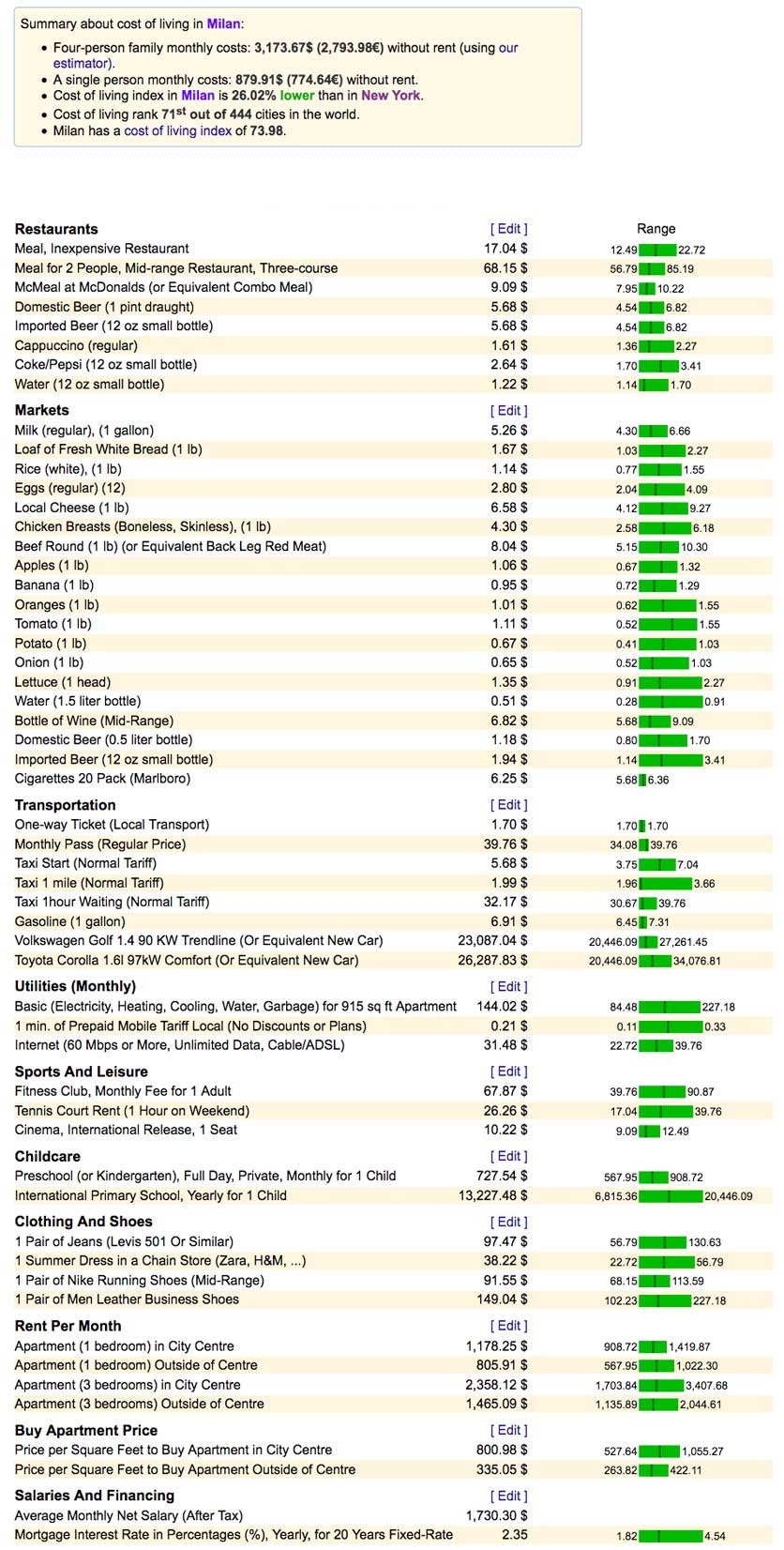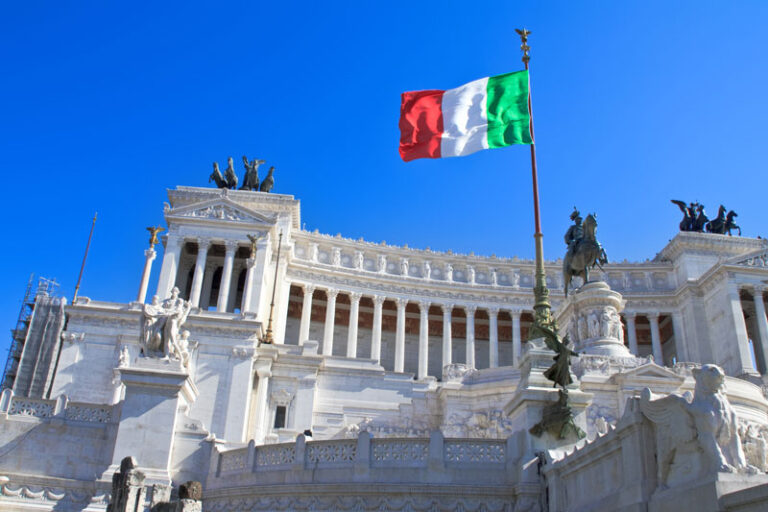
We get asked “Is it expensive to live in Italy?” regularly. While it’s important not to underestimate the cost of living in Italy, not all cities or regions are created equal and some places are inevitably more affordable than others. At the same time, the cost of living in Italy will also depend on how you live and the extent or lack of luxury that you can afford.
With this in mind, you should expect that city the center of Rome or the beach towns of Cinque Terre are likely to cost far more than the northern reaches of the Alps. Similarly, it should be expected that a lavish lifestyle is rather expensive in almost any part of Europe and this is certainly true when it comes to Italy.
Now, that’s not to say you will need to stick with pasta and cheap wine to afford life in Italy but rather to explain how the precise cost of living can be as much and as little as you want – within reason.
Common Misconceptions and the True Cost of Living in Italy
It’s fair to say that the cost of living is not the reason people are attracted to living in Italy. Rather, living “La Dolce Vita” is the reason people feel an emotional pull to this beautiful part of the world. In case you’re not familiar, this refers to the ‘sweet life‘ and the small pleasures which make every day a special day.
When you think of it, these pleasures are often inexpensive and you don’t need overpriced wine or cheese to achieve this laid-back lifestyle. However, there still seems to be a common misconception that anything like this is rather expensive and part of the norm for the cost of living in Italy.
The truth is, most visitors frequent the expensive tourist districts and then assume the cost of living in Italy is extremely high. In reality, this cost is not much different when compared to other major cities in Western Europe but you need to step outside of these tourist zones in order to fully understand.
Calculating the Precise Cost to Live in Italy
It’s not easy to calculate the true cost of living in Italy for everyone across the board because of the differences in locations and lifestyle choices. However, of you can resist the luxuries and spend more time in local markets, the difference in cost is significant.
If you choose to take on a quiet lifestyle in the countryside, the cost of living plummets even further. Whether this relates to the cheap villas or local produce and wine, everything costs less in rural Italy yet everything appears and tastes just as good.
But then you already expected this, right?
Let’s be honest, most people fail to see beyond these tourists zones and experience the more authentic side of Italy where the prices are significantly lower.
The cost of living in Italy will depend on your preference which all begins with your choice of accommodation and where you choose to live.
Living in Italy Can Be Affordable (Depending on Where You Live)
Italy is quite a diverse country in terms of economics and a large disparity exists between the south and areas of central and northern Italy. Meaning, some places are far more affordable than others. As you might expect, housing in the cities is much higher, while quiet country cottages are likely to bring that cost of living right back down again. Needless to say, the decision of where to live is likely going to have the largest impact your wallet and be your largest expense.
The cost of housing in Italy?
Well, real estate varies and you can find everything from a $23,000 village home in the north to a multi-million dollar villa in Tuscany. The pricing for a medium-size apartments tend to cost between $80,000 and $150,000 in the average town. As for the city, you should expect to pay upward of $225,000. However, if you decide to rent, these same apartments can be found for $500 – $1200 per month (on average) where as the odd village home may be as little as $340 per month.
Food, Entertainment and Miscellaneous Costs in Italy
Aside from accommodation, food is sure to be a significant expense and while restaurants can be quite expensive, the cost of groceries are reasonable at the very least. A lunchtime meal can set you back $16, a fancy eatery as much as $90 for two, while a Big Mac Meal is $9. On the other hand, one liter of milk is just $1.45, a loaf of bread is $1.25 and a bottle of supermarket wine just $9.
Entertainment is also surprisingly affordable in places but the truth is, a night out in the big city can hit the wallet hard. After all, one cocktail downtown can set you back up to $11, while movie theater tickets are often upward of $20. That being said, a cappuccino in a quiet neighborhood is less than $2.50 and the cost of cell phone service is also relatively low.
You also need to get around and car prices are largely expensive in Italy. For this reasons, many Europeans decide to take their own car when it comes to settling down in Italy. Meanwhile, the price of gas is approximately $1.80 per liter and a monthly ticket on public transport can be found for just $40.
Cost of Living in Rome, Italy:

*Source: Numbeo.com
Cost of Living in Florence, Italy:

*Source: Numbeo.com
Cost of Living in Milan, Italy:

*Source: Numbeo.com
Final Thoughts
The cost of living in Italy whether you’re an Italian citizen by descent or a long-term tourist is quite reasonable and certainly not as expensive as most people seem to think. While location will determine the extent these costs, the standard of lifestyle is arguably just as important. Either way, Italy can be as “cheap” or as expensive as you make it and a little discipline is often enough to make this a reasonably affordable country in which to live.





